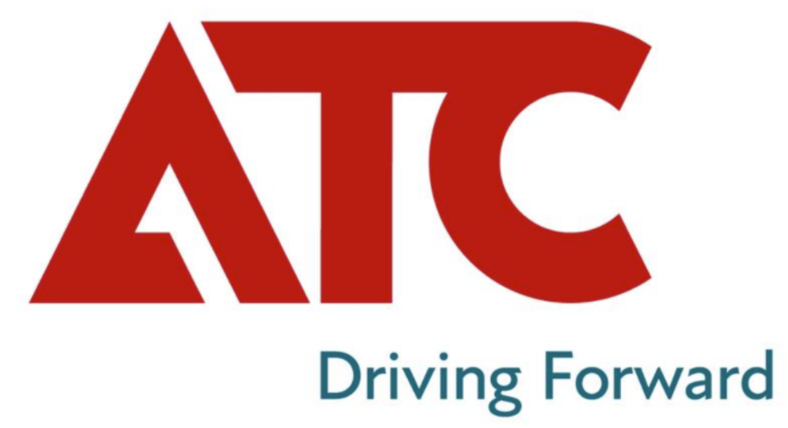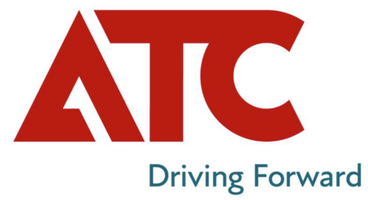Title Page
-
Site conducted
-
Conducted on
-
Prepared by
-
Assesment type
-
Vehicle type
-
Vehicle Registration
-
Driver Name
-
Driver Licence number
-
Expiry date
-
Catagories Held
- AM
- A1
- A2
- A
- B1
- B
- C1
- C
- D1
- D
- BE
- C1E
- CE
- D1E
- DE
- W
-
Driver CPC Card held
-
ADR Card Held
-
Eyesight test
- Able to read a standard registration plate at a distance of 20.5 metres (67ft), with corrected vision if required.
- Unable to read a standard registration plate at a distance of 20.5 metres (67ft). Unable to Assess.
-
Fitness to drive
- Driver is fit, attentive, calm and no intoxication or other impairment is apparent.
- Driver appears to be suffering from fatigue or stress or seems otherwise emotionally or mentally affected or intoxicated by either alcohol or other legal or illegal drug.
-
Defects discovered by driver during walkaround check
-
Odometer Start
-
Odometer finish
-
Total distance
On Road assessment
-
Vehicle defect checking procedure
- The correct procedure was known and followed correctly.
- A vehicle defect checking took place, procedures were followed partly correct.
- No vehicle defect checking was carried out.
-
Safety checks including ancillary equipment
- Driver carried out the vehicle safety checks, I.E. practised at setting up the seat to ensure maximum observation and lessing fatigue within her/him and being in total control of the vehicle at all times and being able to use the mirrors correctly. Ancillary checks such as extra checks for the use of a tail lift, lorry loaded demountable body etc.
- Crucial safety checks like checking the mirrors and seat position were carried out but some components were overlooked.
- Failed to carry out the vehicle safety checks to required standards of safety.
-
Driving Position and Seat Belt
- A business-like approach, the candidate sat alert in an upright position and maintained posture throughout the drive. The seat belt was used when fitted.
- The candidate tended to be a little casual in the driving position or did not appear to be at ease in his/her driving position. The seat belt was used where fitted.
- The candidate adopted a lazy seating position, potentially leading to impaired visibility. The candidate failed to use the seat belt automatically and required prompting.
-
Acceleration (including cruise control)
- Applied steady and progressive acceleration whenever possible. Avoided speed peaks. Acceleration sense was well developed, resulting in a smooth, safe and efficient style of driving. Cruise control was used where appropriate.
- On occasions, the accelerator could have been used more smoothly and with greater control. Cruise control was not always used where appropriate.
- Erratic use of the accelerator resulted in a poorly controlled drive. The rev. counter continually exceeded the green power/economical band. There was a lack of acceleration sense. Cruise control was not used.
-
Braking (including engine/exhaust brake)
- Braking was positive and smooth, tapering on and off. The exhaust/engine brake was used effectively whenever possible. Handbrake was applied when required.
- Braking was occasionally harsh and rushed. More thought to braking would avoid late and hurried applications. The handbrake was not applied when required.
- Brakes were applied too frequently and unnecessarily. Incorrect use of the handbrake. Little or no use of the exhaust/engine brake.
-
Clutch control
- The clutch was used in a most efficient manner and was well controlled at all times.
- Generally the use of the clutch was sound but occasional inappropriate operation resulted in some errors in control.
- The clutch was engaged too early causing the vehicle to coast. Observed riding the clutch on a number of occasions or holding the vehicle using the clutch on inclines and junctions
- Not applicable
-
Gear selection and use
- A competent driver, skilful and aware of surrounding road and weather conditions. Braking distances and visibility were constantly considered when external changes occurred.
- The candidate’s driving style was a little casual considering the conditions but full control of the vehicle was maintained.
- During the drive there was little evidence shown that the driver was aware of changes in road or weather conditions and the driving style was not adjusted accordingly.
-
Steering
- Correct steering technique was clearly demonstrated.
- Although there were no positional errors on the road, the steering method used tended to be unorthodox and minor errors were made. The vehicle was driven one handed on occasions.
- There was a lack of discipline towards steering. Both hands were removed from the steering wheel at the same time.
-
Hazard Perception
- Good forward observation, resulting in a uniform, foresighted and safe style of driving.
- Read the road well but room to improve observation, hazard perception and attention to finer detail.
- There were clear examples of poor observation and planning resulting in an unprepared approach to hazards. Little appreciation of how to anticipate and deal with hazards.
-
Use of Speed (legal/appropriate)
- Legal speed limits were strictly observed. Constantly matching the speed with visibility/road conditions and planning ahead for changes.
- Speed limits were observed but better forward planning, taking into account imminent changes to speed limits, would have resulted in a smoother drive.
- Speed limits were exceeded on occasions. Inappropriate speeds also evident on approaches to hazards, junctions, traffic lights etc.
-
Lane Discipline and Positioning
- Adherence to lane markings was exemplary, with the vehicle positioned to maximise both visibility and safety and to facilitate progress. The correct separation distance was observed at all times.
- Generally good lane discipline and positioning but at times markings were cut or straddled.
- Consistently straddled lane markings. Positioning was inconsistent, resulting in poor space around the vehicle and reduced visibility.
-
Making Progress and Planning
- Good safe progress was maintained. Taking advantage in gaps in traffic due to long forward planning without compromising safety. There was a constant smooth flowing rhythm throughout the drive.
- The flow and progress of the drive were lost on occasions.
- Little attempt was made to maintain safe progress, with lost opportunities throughout the drive. A lack of ability to link the elements of the drive together adversely affected flow. A distinct lack of planning was evident.
-
Use of Mirrors and Blind Spots
- Mirrors were all used effectively and blind spots were checked when required.
- Although often used, checking the mirrors was not always linked to other features of vehicle control.
- There was inconsistent, insufficient or delayed use of mirrors and blind spot checks were rarely used.
-
Junctions and roundabouts
- Junctions were approached smoothly with full and effective observation to the surrounding area.
- Junctions were approached with some late observations to the surrounding area without causing undue risk.
- Junctions were approached without due care and attention to the surrounding area causing undue risk.
-
Use of Signals
- Excellent information was given to other road users during the drive. Signals were used correctly when ever needed.
- Signals were overused/underused at times but road safety was never compromised.
- Insufficient use of signals and/or misleading signals given to other road users.
-
Reaction to Road Markings and Signs
- Strictly observed all markings and signs and reacted accordingly in a safe and efficient manner.
- Observed signs but at times failed to react accordingly. However, road safety was not compromised.
- Missed several signs/markings resulting in potentially hazardous situations.
-
Overtaking / Meeting Oncoming traffic
- Overtaking was carried out in a safe and positive manner.
- Overtaking manoeuvres were safe but lacked a degree of urgency. Greater attention to position, prior to and whilst overtaking, would have resulted in a better line.
- Inadequate planning and execution of the manoeuvre led to dangerous situations.
-
Vehicle Sympathy
- The candidate displayed obvious sympathy for the vehicle. Evidence of low engine speed where possible and high power where necessary. The vehicle was controlled smoothly throughout the drive.
- Control of the vehicle was fairly smooth, although greater attention needs to be paid to use of gears and engine speed to lead to improved vehicle sympathy.
- There was a distinct lack of sympathy shown for the vehicle, with a noticeable disregard for changes in conditions and reading of the road. The result was a roughly controlled almost abusive drive.
-
Driver’s Attitude/Technique
- A competent driver, skilful and aware of other road users. Concentrated well and displayed a high level of consideration and courtesy for other road users. The candidate had command of the road, using the size of the vehicle to full advantage, without bullying. A positive attitude was evident.
- The candidate was relaxed and aware of the presence of other road users making adjustments to the drive accordingly. Demonstrated acceptable levels of consideration, attitude and ability.
- The candidate showed little interest during the assessment and generally displayed a negative attitude. The candidate displayed unacceptable forcefulness on at least one occasion and there was evidence of a lack of courtesy to other road users.
-
Manoeuvring at Slow Speed (Including Reversing)
- A competent driver, skilful and aware of the surroundings. Concentrated well and displayed a high skill. A positive attitude was evident.
- The candidate was relaxed and aware of the surroundings. Demonstrated an acceptable skill level
- The candidate showed that their skills are not to the level required. Further training on MASS is required
-
Fuel Economy
- A competent driver, skilful and aware of how to achieve best MPG from the vehicle.
- The driver showed some fuel efficient skills but there is room for improvement.
- The candidate showed little interest in driving the vehicle in a fuel efficient manner. Driver to attend coaching session on fuel efficient driving.
-
Couple / Uncouple
- The coupling and uncoupling procedure was carried out in appropriate and controllable speed, brakes (both trailer and unit) were applied and keys removed whenever the cabin was left, landing legs and secure handles were used, service lines were connected/ disconnected correctly and double checked, “dog clip” applied/removed, number plates and extra lights applied/removed.
- Process was carried out at reasonable speed, brakes (both trailer and unit) applied and keys removed whenever the cabin was left, landing legs and secure handles used, service lines were connected/disconnected correctly but not checked, “dog clip” applied/removed, number plates and extra lights applied/removed.
- Process was carried out at speed, trailer and/or unit brake wasn’t applied or keys haven’t been removed at any time the cabin was left, landing legs and secure handles were not used, service lines were connected/disconnected incorrectly and not checked, “dog clip” not applied/removed, number plates and extra lights not applied/removed.
- Not applicable
-
Road and Weather Conditions
- A competent driver, skilful and aware of surrounding road and weather conditions. Braking distances and visibility were constantly considered when external changes occurred.
- The candidate’s driving style was a little casual considering the conditions but full control of the vehicle was maintained.
- During the drive there was little evidence shown that the driver was aware of changes in road or weather conditions and the driving style was not adjusted accordingly.
-
Assessors observations







